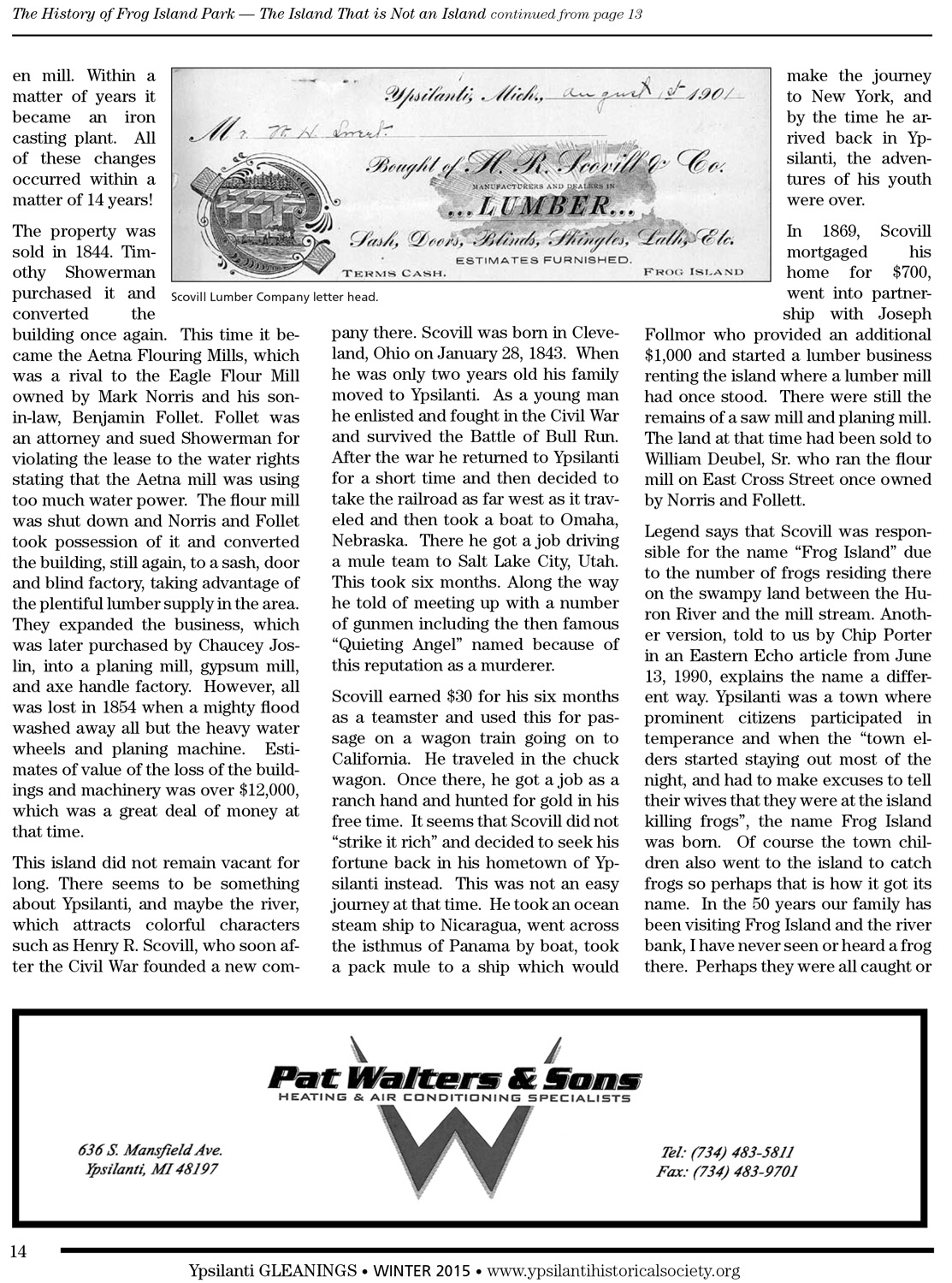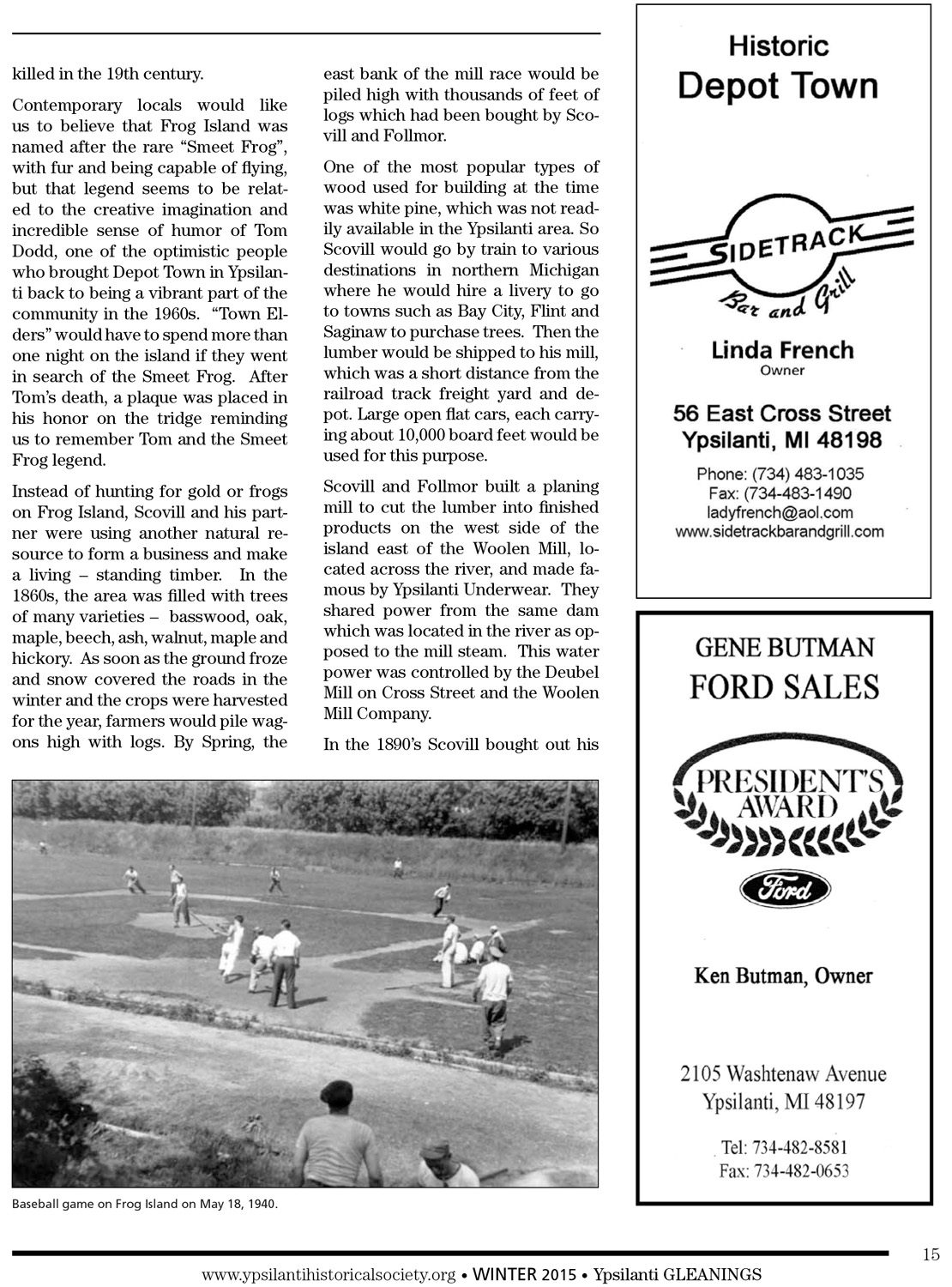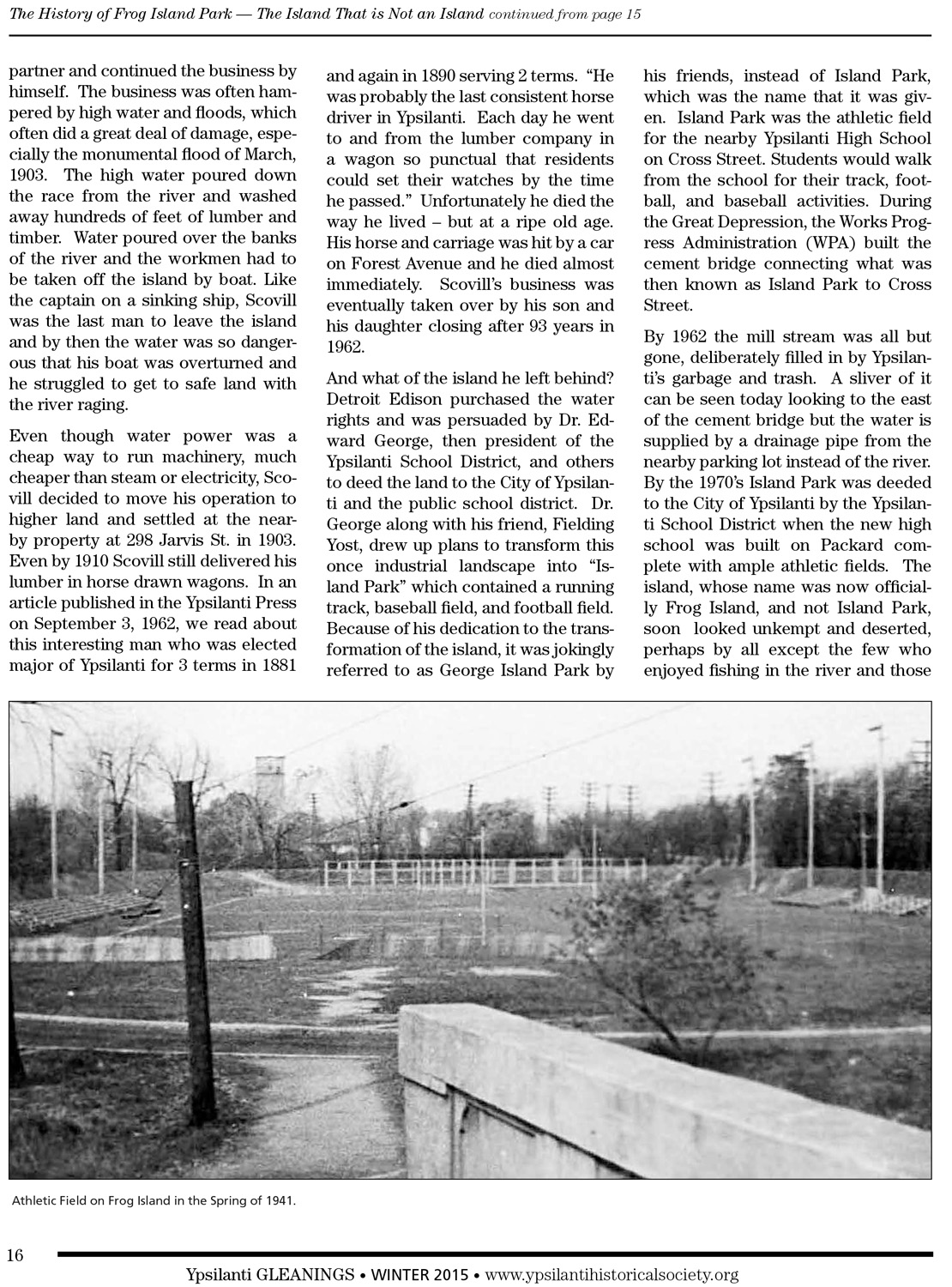The History of Frog Island Park – The Island That is Not an Island






Parent ID
Rights Held By
Ypsilanti Historical Society
Doc
Subjects
Ypsilanti Gleanings
City History
Industry
Recreation